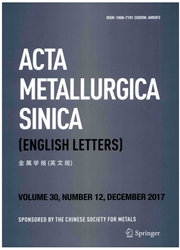

 中文摘要:
中文摘要:
A new numerical approach is presented, which is used to simulate the dynamic process of metal transfer. The process of metal transfer in gas metal arc welding is simulated based on FLUENT. A two-dimensional axisymmetric numerical model is developed using volume of fluid method and the distributions of physical quantities including pressure, current density, electric potential in the droplet are investigated. For improving the veracity of the simulated results and decreasing the effect of the uncertain surface tension coefficient on the simulated results, the relationship between the welding current and surface tension coefficient is modified by analysis of regression. Meanwhile for testing the accuracy of simulated results, the welding experiments are performed and the high-speed photography system is used to record the real process of metal transfer. The results show that the simulated results are in reasonably good agreement with the experimental ones.
 英文摘要:
英文摘要:
A new numerical approach is presented, which is used to simulate the dynamic process of metal transfer. The process of metal transfer in gas metal arc welding is simulated based on FLUENT. A two-dimensional axisymmetric numerical model is developed using volume of fluid method and the distributions of physical quantities including pressure, current density, electric potential in the droplet are investigated. For improving the veracity of the simulated results and decreasing the effect of the uncertain surface tension coefficient on the simulated results, the relationship between the welding current and surface tension coefficient is modified by analysis of regression. Meanwhile for testing the accuracy of simulated results, the welding experiments are performed and the high-speed photography system is used to record the real process of metal transfer. The results show that the simulated results are in reasonably good agreement with the experimental ones.
 同期刊论文项目
同期刊论文项目
 同项目期刊论文
同项目期刊论文
 期刊信息
期刊信息
